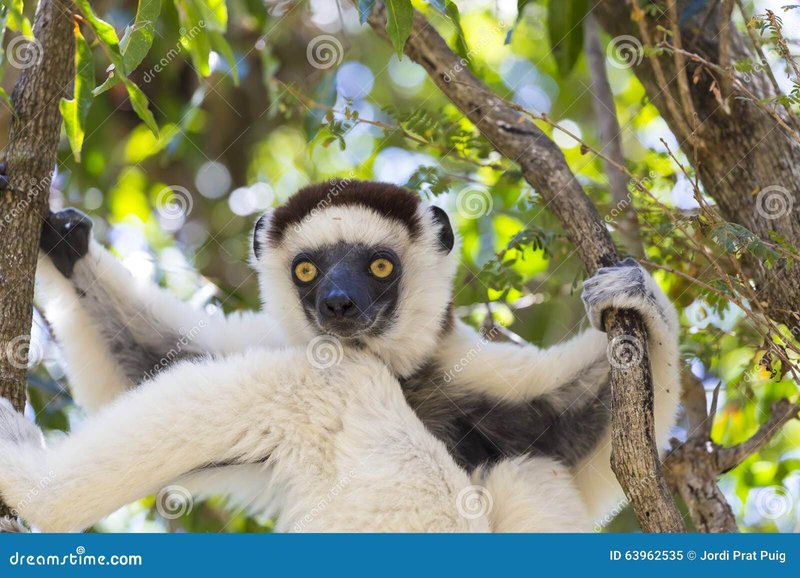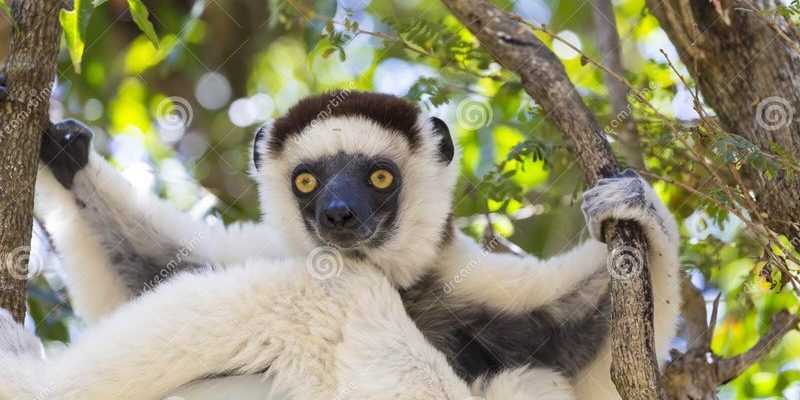
You might be wondering why this quirky creature matters in the grand scheme of nature. Well, let’s dive into the world of the sifaka and discover how its behaviors and interactions support the delicate balance of life around it. Understanding the sifaka’s role helps us appreciate the interconnectedness of all living beings—and ultimately, how we fit into this beautiful tapestry of life, even if we’re just sipping coffee and enjoying the view from afar.
What Is a Sifaka?
The sifaka is a type of lemur native to Madagascar, and it’s one of the most recognizable species of its kind. With its large, expressive eyes and distinctive black-and-white or brown-and-white fur, the sifaka is truly a sight to behold. These primates belong to the family Indriidae, which makes them cousins to the larger indri and other lemurs.
Sifakas are known for their unique way of moving. They can leap from tree to tree, using their powerful legs and long arms to its advantage. Instead of climbing down, they make vertical jumps, which can be quite a spectacle to watch! This unique locomotion not only allows them to navigate their forest homes efficiently but also helps them escape predators.
These delightful creatures are social animals, often living in small groups. They communicate through vocalizations and body language, which helps strengthen their social bonds. This social structure plays a critical role in their survival and the health of their environment.
Sifaka as Seed Dispersers
One of the sifaka’s most important roles in its ecosystem is that of a seed disperser. As they munch on fruits and leaves, they inadvertently help seed dispersal. When a sifaka eats fruit, it digests the pulp but often passes the seeds unchanged in its droppings. This is where the magic happens.
When these seeds are deposited back into the forest, they can germinate and grow into new plants. This process is vital for maintaining plant diversity and replenishing the forest. It’s a bit like nature’s recycling program, where the sifaka contributes to the health of its habitat just by doing what it does best—eating.
Additionally, because sifakas prefer to eat fruits that are a bit out of reach for many other animals, they help spread the seeds of certain plant species that may otherwise struggle to thrive. This creates a more diverse ecosystem where various plants can flourish.
Impact on Forest Health
The presence of sifakas is essential for maintaining the overall health of Madagascar’s forests. By acting as seed dispersers, they contribute to forest regeneration, which is imperative for combating deforestation and land degradation. Their movements through the trees help shape the forest structure, allowing light to penetrate and enabling undergrowth to flourish.
Moreover, sifakas influence the population dynamics of other species in their habitat, including other plants and animals. When sifakas thrive, they help ensure that the right balance of plant species is maintained, which, in turn, supports various animal populations. Imagine it as a ripple effect; when one piece is functioning well, the whole system benefits.
In terms of biodiversity, the more healthy sifaka populations are, the more robust the forest becomes. This biodiversity is essential not just for the animals living in it but also for the humans who rely on forest resources for their livelihoods.
Prey and Predator Dynamics
The sifaka’s role isn’t just about plants; it also relates to the broader food web. As prey to various predators, such as Madagascar’s fossa (a carnivorous mammal), sifakas are an important food source that helps support these predator populations. Without a balanced predator-prey relationship, disruptions can occur, leading to the potential overpopulation of certain species and the decline of others.
Interestingly, sifakas help maintain the health of their environment in two ways. First, by serving as prey for larger animals, they support the food chain. Second, their unique lifestyle and habitat needs mean that they require a rich and diverse environment to thrive, which indirectly encourages the health of the ecosystem.
When predators like the fossa have a steady supply of sifakas, it helps ensure that they don’t overeat other species, promoting a balanced environment where various animals can coexist. This delicate balance is vital for a thriving ecosystem.
Conservation Challenges They Face
Unfortunately, sifakas are facing some serious threats. Habitat loss due to deforestation is a major issue, with large areas of Madagascar’s forests being cut down for agriculture and logging. This not only reduces the sifakas’ living space but also impacts their ability to find food and reproduce.
Additionally, hunting and poaching pose threats to their populations. As more people encroach on their territory, they often see sifakas as a source of food or income. This puts sifa at risk and threatens their role as vital players in their ecosystem.
Conservation efforts are crucial to help protect these fascinating creatures and their habitats. Organizations and local communities are working together to create protected areas and promote sustainable practices that ensure the survival of both sifakas and their forest homes. You see, saving the sifaka isn’t just about preserving one species; it’s about protecting the intricate web of life in Madagascar.
The Role of Sifakas in Research and Education
Sifakas also play a significant role in scientific research and education. Their unique behaviors, social structures, and interactions with their environment make them a focus for numerous studies. Researchers study how sifakas adapt to their habitats, which can provide critical insight into the health of ecosystems.
Educational programs that feature sifakas often help raise awareness about biodiversity conservation. By showcasing these charming creatures, organizations can engage the public, drawing attention to the importance of protecting Madagascar’s unique wildlife and environment.
When people learn about the sifaka’s role in its ecosystem, it creates a sense of connection and responsibility. Understanding that our actions can impact other species, even those halfway around the world, is a powerful motivator for conservation efforts.
The sifaka’s role in its ecosystem is a beautiful example of the interconnectedness of all living things. From their work as seed dispersers to their place in the food web, sifakas contribute to a balanced environment that supports various life forms. Protecting these remarkable creatures isn’t just about saving a species; it’s about preserving a rich and diverse ecosystem for future generations.
Let’s remember that every species has its part to play, and the sifaka is a shining reminder of how we all fit into the larger picture of life on Earth. So, the next time you hear about sifakas or see a picture of one, take a moment to appreciate not just their beauty, but the critical role they play in keeping Madagascar’s forests vibrant and full of life.

